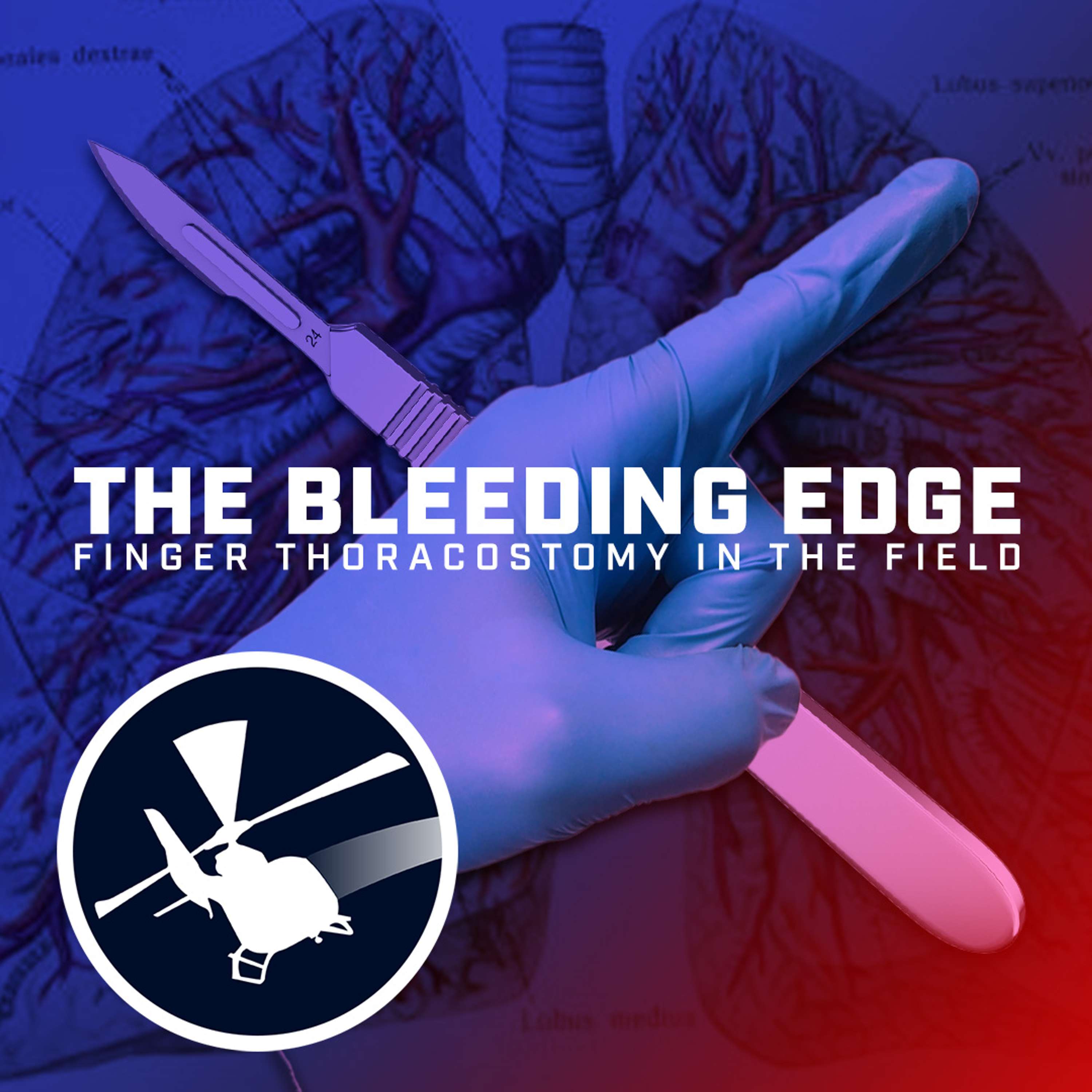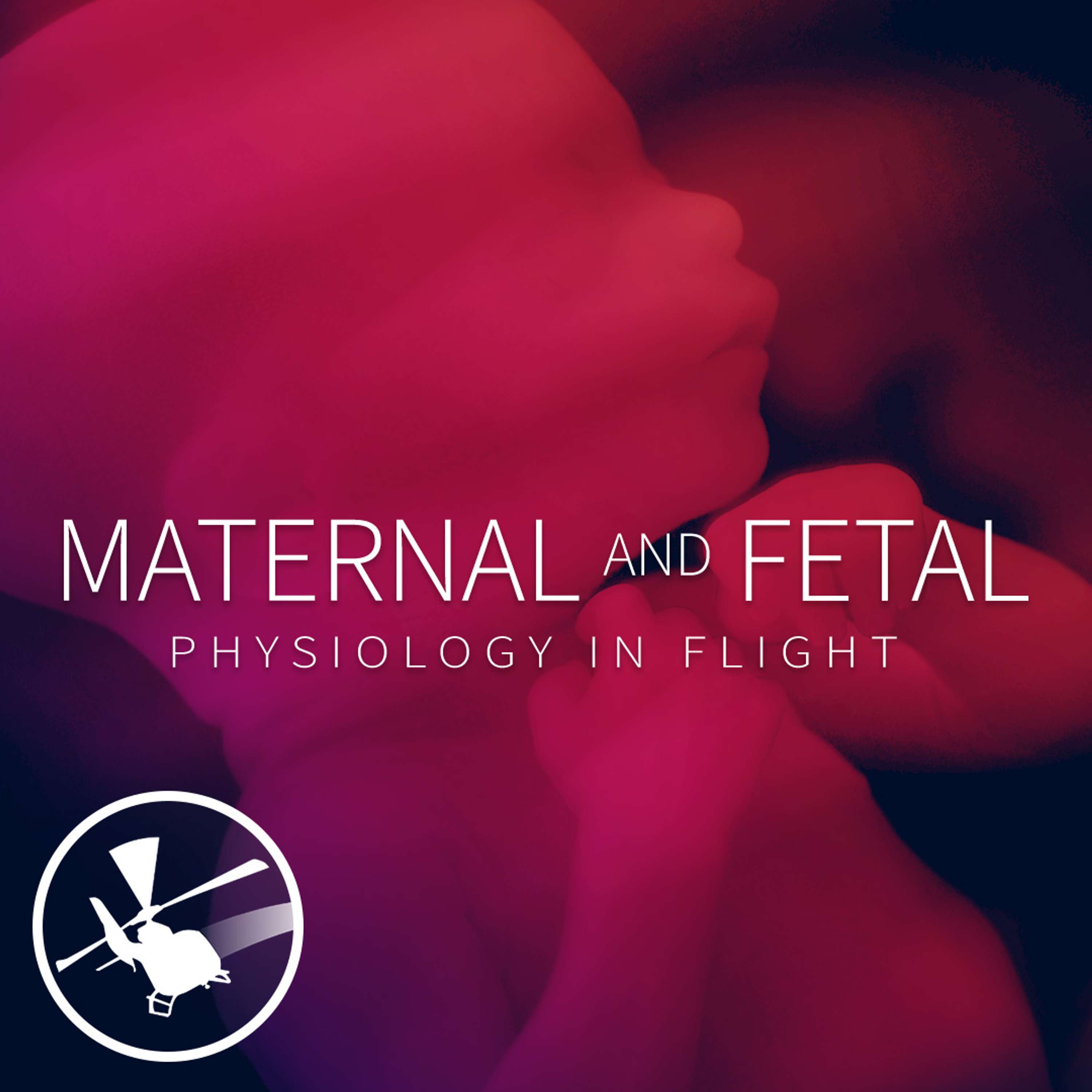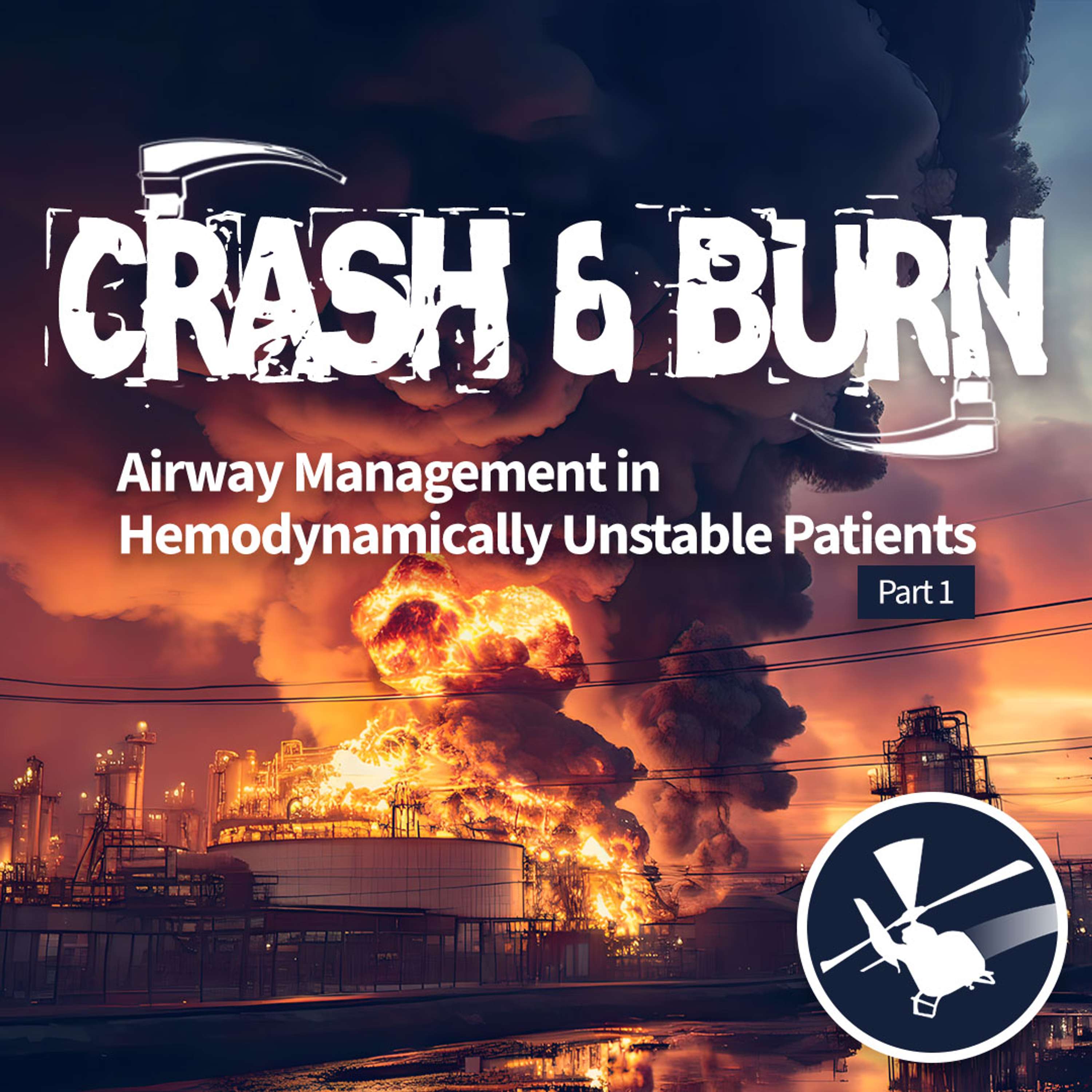Every Breath They Take: ARDS Part 1
Description
PART 1 of 2
In this episode, Dr. Michael Lauria is joined by several EM/Critical Care and Transport/Retrieval physicians as we discuss the management of acute respiratory distress syndrome (ARDS) in the critical care transport setting. We cover the pathophysiology of ARDS, the criteria for diagnosis, and the basics of lung protective ventilation. We also explore the concept of driving pressure and its role in determining optimal ventilation settings. The conversation highlights the importance of individualizing treatment based on patient characteristics and monitoring parameters such as plateau pressure, driving pressure, and compliance.
Our team provides practical tips for adjusting ventilation settings and emphasizes the need for ongoing assessment and optimization. We start out with some fundamental concepts of mechanical ventilation: the approach to low tidal volumes in ARDS patients and the use of point-of-care blood gases. We also explore the use of steroids in ARDS, the target oxygen saturation levels, and the use of paralysis in unstable patients. In addition, we touch on controversial topics such as inhaled pulmonary vasodilators in ARDS as well as the application of evidenced-based therapies such as proning in the transport environment (part 2). In the final part of the conversation, we review the use of alternative ventilator modes, such as APRV, and the indications for ECMO in refractory ARDS. We emphasize the importance of optimizing conventional, evidence-based therapies before considering ECMO and highlight the need for clear guidelines and training when using these advanced interventions. We also discuss the challenges and potential complications associated with ECMO.
Takeaways
- ARDS is a syndrome characterized by acute onset, bilateral infiltrates on imaging, and hypoxemia.
- The diagnosis of ARDS is based on criteria such as acute onset, infectious or inflammatory etiology, bilateral opacities on imaging, and impaired oxygenation.
- Lung protective ventilation aims to minimize lung injury by using low tidal volumes (6-8 ml/kg), maintaining plateau pressures below 30 cmH2O, and keeping FiO2 below 60%.
- Driving pressure, the difference between plateau pressure and PEEP, is a marker of lung compliance and can be used to guide ventilation adjustments.
- Individualized management is crucial, considering factors such as patient characteristics, response to therapy, and monitoring parameters.
- Regular assessment and optimization of ventilation settings are necessary to ensure effective and safe management of ARDS.
- Low tidal volumes should be based on the patient's pH and PCO2, with a focus on maintaining a safe pH level. If crews are unable to measure these parameters not decreasing tidal volumes lower than 4 cc/kg is reasonable.
- Point-of-care blood gases are essential for monitoring patients on low tidal volumes and making adjustments as needed.
- Oxygen saturation targets should be individualized based on the patient's condition and physiology, with a range above 88-92% often considered reasonable. However, this issue is controversial, and occasionally, lower saturations are considered acceptable.
- Steroids may be beneficial in ARDS patients, especially those with severe pneumonia, but the timing and dosing should be determined based on the patient's specific situation.
- Paralysis can be considered in unstable ARDS patients who cannot tolerate low tidal volumes, but it should be used selectively and in conjunction with deep sedation.
- The use of inhaled pulmonary vasodilators in ARDS is controversial, and no significant mortality benefit has been demonstrated. However, they may be considered a salvage therapy in patients on their way to an ECMO center or when other interventions have been exhausted. Inhaled pulmonary vasodilators, such as epoprostenol, can improve oxygenation and pulmonary arterial pressure in patients with ARDS and RV failure.
- The use of inhaled pulmonary vasodilators should be based on individual patient characteristics and the availability of resources.
- Proning in transport has been shown to be safe and effective. It should be considered for select cases, such as patients with high pulmonary arterial pressure or basilar atelectasis.
- Transport teams should be prepared to continue inhaled pulmonary vasodilator therapy if the patient is already receiving it.
- ECMO should be considered when conventional therapies have failed, and the patient's condition is reversible and not contraindicated.
- ECMO transport requires specialized training, clear guidelines, and ongoing communication with the receiving center.
- Alternative ventilator modes, such as APRV, have not shown significant benefit in large trials. Their use is controversial but not unreasonable in certain circumstances. Implementing these settings requires training, education, and clear protocols. Generally speaking, they should be used judiciously and in consultation with the receiving physician.
- Optimizing conventional therapies and providing high-quality care can often obviate the need for ECMO.
- Transport teams should be proactive in discussing potential ECMO candidates with the receiving physician and considering the appropriateness of ECMO for each patient.
References:
- Abou-Arab O, Huette P, Debouvries F, Dupont H, Jounieaux V, Mahjoub Y. Inhaled nitric oxide for critically ill Covid-19 patients: a prospective study. Crit Care. Nov 12 2020;24(1):645. doi:10.1186/s13054-020-03371-x
- Gattinoni L, Camporota L, Marini JJ. Prone Position and COVID-19: Mechanisms and Effects. Crit Care Med. May 1 2022;50(5):873-875. doi:10.1097/ccm.0000000000005486
- Grasselli G, Calfee CS, Camporota L, et al. ESICM guidelines on acute respiratory distress syndrome: definition, phenotyping and respiratory support strategies. Intensive Care Med. Jul 2023;49(7):727-759. doi:10.1007/s00134-023-07050-7
- Griffiths MJ, Evans TW. Inhaled nitric oxide therapy in adults. N Engl J Med. Dec 22 2005;353(25):2683-95. doi:10.1056/NEJMra051884
- Guérin C, Reignier J, Richard JC, et al. Prone positioning in severe acute respiratory distress syndrome. N Engl J Med. Jun 6 2013;368(23):2159-68. doi:10.1056/NEJMoa1214103
- Ranieri VM, Rubenfeld GD, Thompson BT, et al. Acute respiratory distress syndrome: the Berlin Definition. Jama. Jun 20 2012;307(23):2526-33. doi:10.1001/jama.2012.5669
- Acute Respiratory Distress Syndrome Network; Brower RG, Matthay MA, Morris A, Schoenfeld D, Thompson BT, Wheeler A. Ventilation with lower tidal volumes as compared with traditional tidal volumes for acute lung injury and the acute respiratory distress syndrome. N Engl J Med. 2000 May 4;342(18):1301-8. doi: 10.1056/NEJM200005043421801.
- Grasselli G, Calfee CS, Camporota L, et al; European Society of Intensive Care Medicine Taskforce on ARDS. ESICM guidelines on acute respiratory distress syndrome: definition, phenotyping and respiratory support strategies. Intensive Care Med. 2023 Jul;49(7):727-759. doi: 10.1007/s00134-023-07050-7.
- Qadir N, Sahetya S, Munshi L, Summers C, Abrams D, Beitler J, Bellani G, Brower RG, Burry L, Chen JT, Hodgson C, Hough CL, Lamontagne F, Law A, Papazian L, Pham T, Rubin E, Siuba M, Telias I, Patolia S, Chaudhuri D, Walkey A, Rochwerg B, Fan E. An Update on Management of Adult Patients with Acute Respiratory Distress Syndrome: An Official American Thoracic Society Clinical Practice Guideline. Am J Respir Crit Care Med. 2024 Jan 1;209(1):24-36. doi: 10.1164/rccm.202311-2011ST.
- Matthay MA, Arabi Y, Arroliga AC, Bernard...
























